Recent Chinese Construction Suggests Expectations for Broader Trade
Commercial satellite imagery of the Sinuiju border crossing shows that work has resumed on the Chinese side of the bridge, which may indicate some anticipation of the bridge’s eventual opening. Construction of this large suspension bridge connecting Dandong to Sinuiju, a $350-million project, started some 12 years ago and was finished three years later, but has yet to be opened to traffic.
While there are customs and exhibition facilities on the Dandong side of the bridge, no facilities have been built on the North Korean side. In 2020, what appeared to be preparatory work for possible customs and immigration facilities on the Sinuiju side began but ceased later that year as the pandemic conditions worsened around the world. Work resuming on the Sinuiju side of the bridge will be a good indicator of North Korea’s confidence in a full return to normal trade.
History
Construction of the bridge began in the second half of 2011. At that time, prep work began to install caissons that would serve as a base for the two bridge towers. By 2013, the road bridge was completed, with roads heading onto and off the bridge completed a year later.
However, in 2014, everything stopped. On the North Korean side, the bridge led out into an empty field, earning it the nickname “the bridge to nowhere.”
It wasn’t until mid-2020 that the road was finally connected to the North Korean road network. At that time, land clearance began on a half-square-kilometer plot just north of the new road. The planned use of the land is unclear, but its position near the bridge landing suggests use as a probable customs and immigration area.
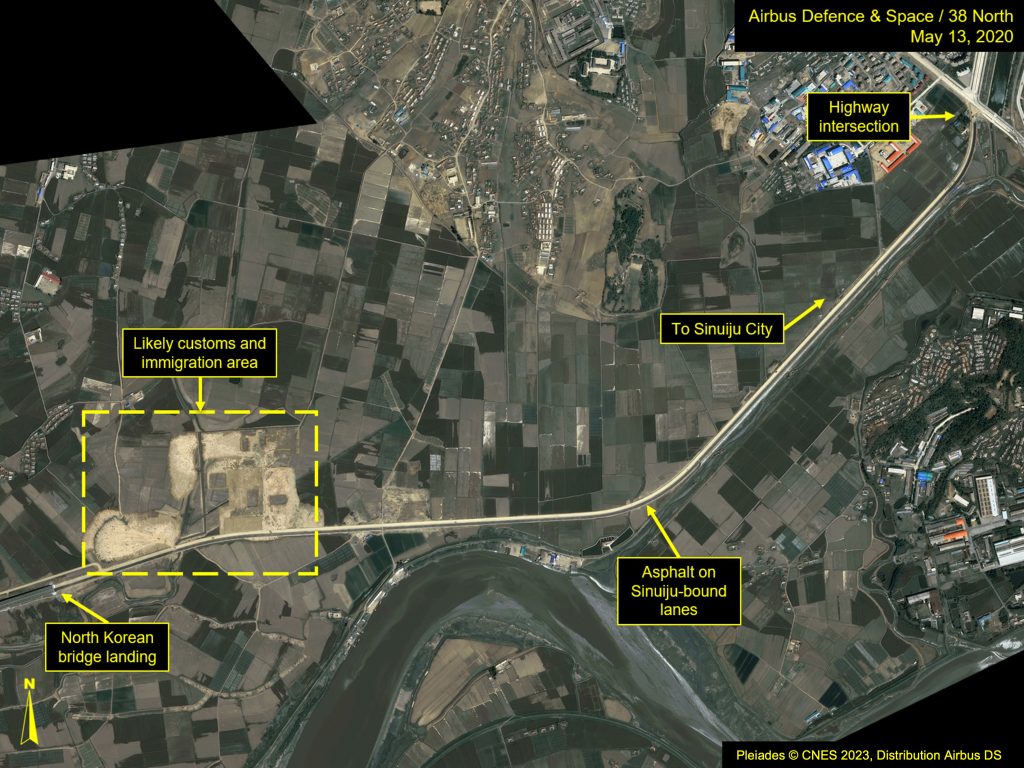
The COVID Years
North Korea closed its borders in January 2020 as part of COVID containment measures and instituted nationwide lockdowns and restrictions to help prevent a pandemic outbreak domestically. Despite these precautions, however, several ambitious construction projects continued throughout the country, although largely focused on domestically oriented priorities such as housing projects and the Pyongyang General Hospital.
The work around the Sinuiju Bridge area ceased by late 2020 and does not appear to have resumed. Despite limited trade restarting in 2022 and rumors for further loosening of border restrictions in the near future, there are no signs yet that work is planned for this area anytime soon. Furthermore, activity on the road leading to the bridge in recent years seems to have been limited to grain drying and what appears to be local agricultural traffic.
Chinese Development
The Chinese side of the bridge was always more developed than the North Korean side. In 2016, a new customs hall and exhibition area were built, and ground was cleared for a vehicle processing area, although there has been little evidence of activity around this area over the past several years until 2022.
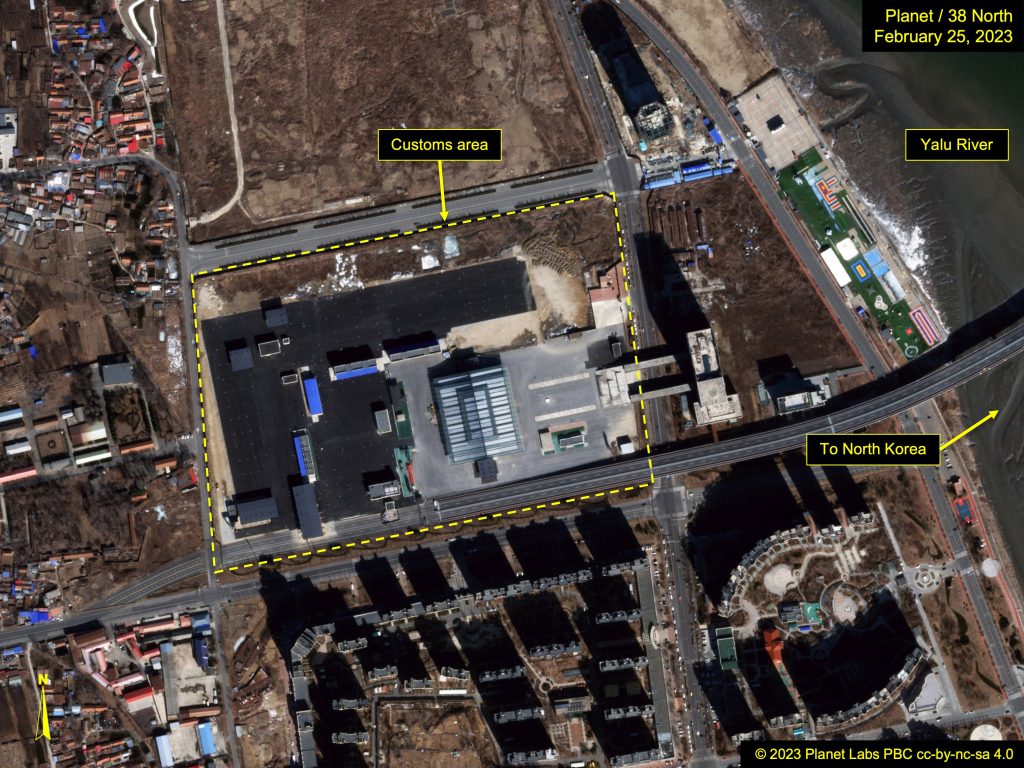
Late last year, work began on paving areas of the facility that had not previously been paved, and two apparent customs or immigration checkpoints were constructed on the roadway leading from North Korea. Preparatory work for these began in December 2021 when sections of the roadway—which was not in use at the time—were fenced off with safety barriers.
The two new checkpoints and several additional buildings appeared to be largely complete by October 2022.
Work continues to date to construct a smaller building approximately 100 meters before the larger checkpoint area.
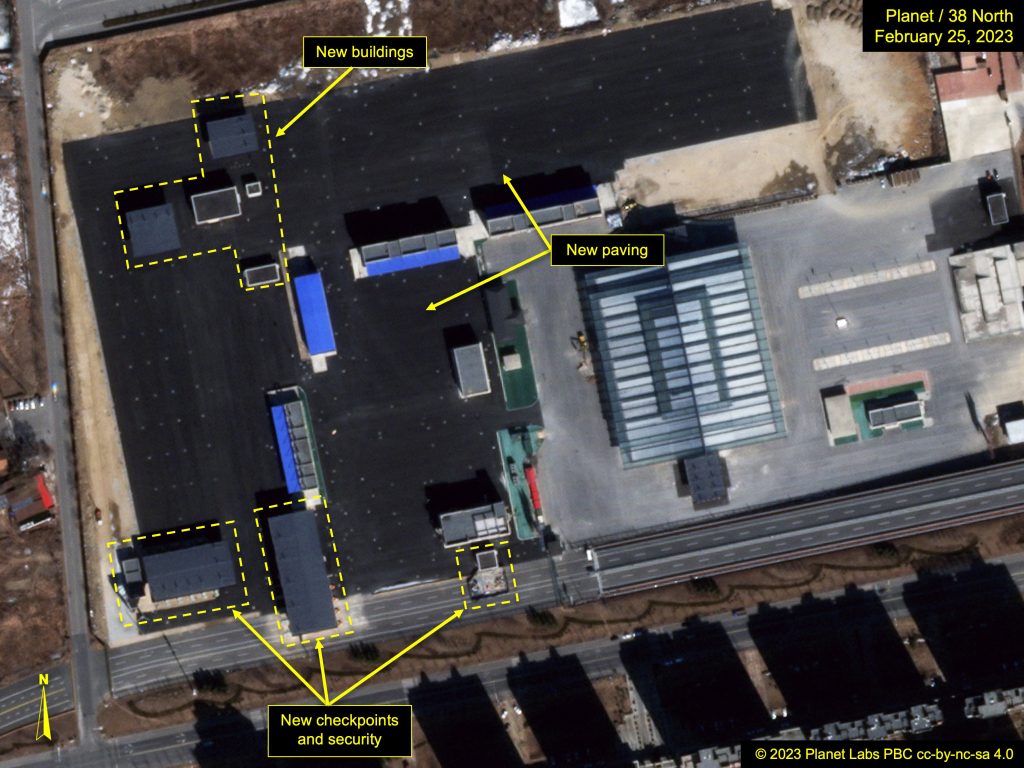
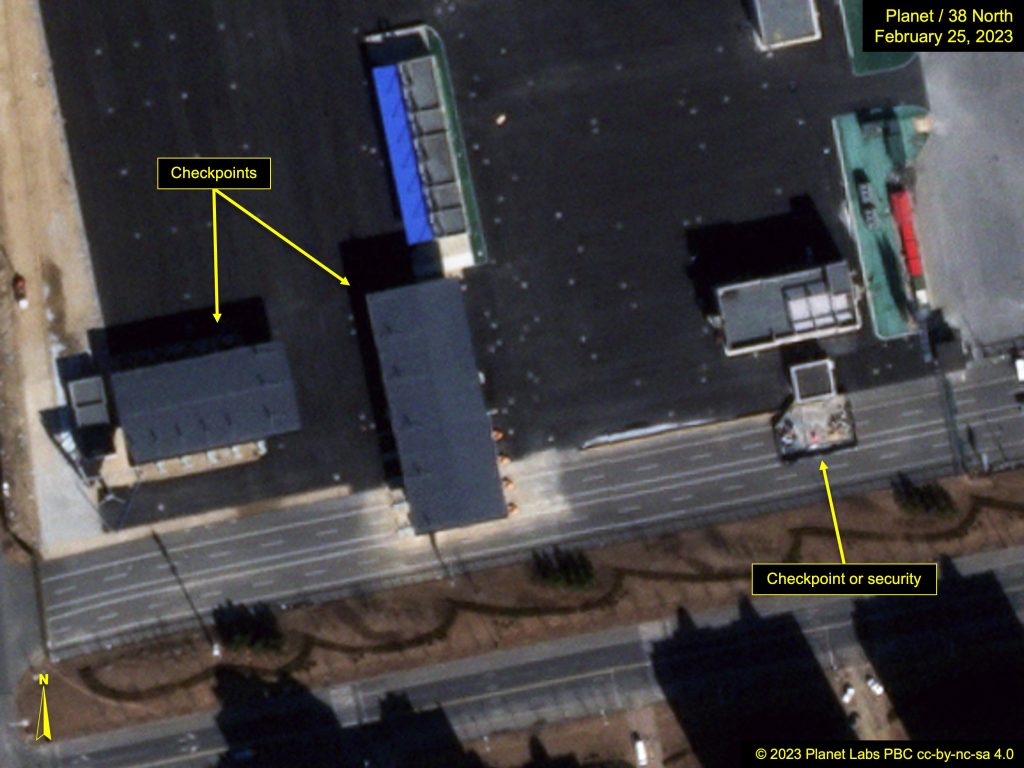
This spurt of construction activity suggests Chinese authorities may be anticipating the bridge to finally open, although that appears unlikely until customs and immigration facilities are completed on the North Korean side.
The Existing Crossing
Until the new bridge opens, any resumption of trade will rely on the Sino-Korean Friendship Bridge, which sits at a location much closer to the center of both Dandong and Sinuiju. That bridge hosts a single carriage road and railway track.
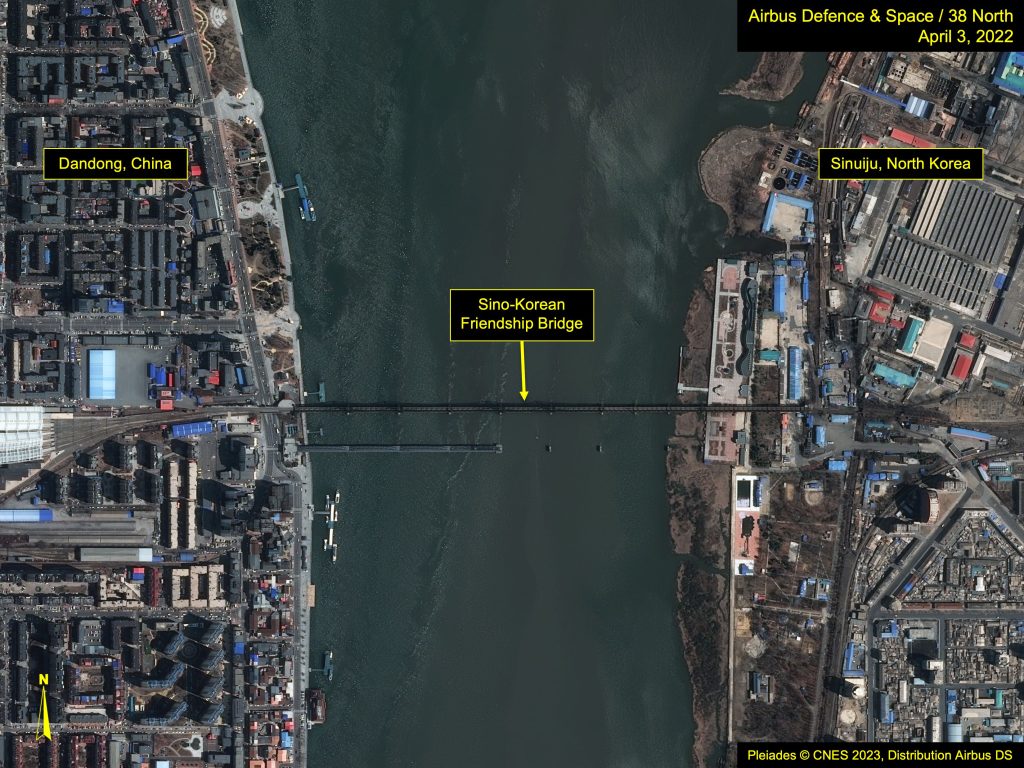
Before the border closures, cargo trucks would tend to gather in customs yards on each side of the bridge before making the roughly 1-kilometer drive between the two countries.
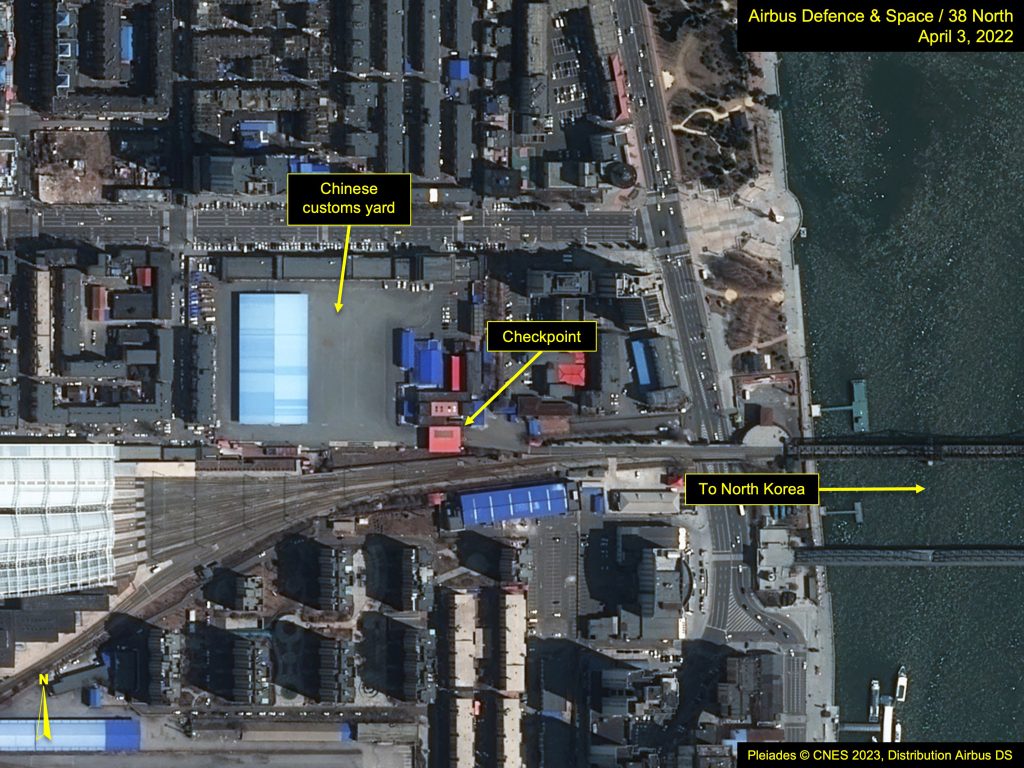
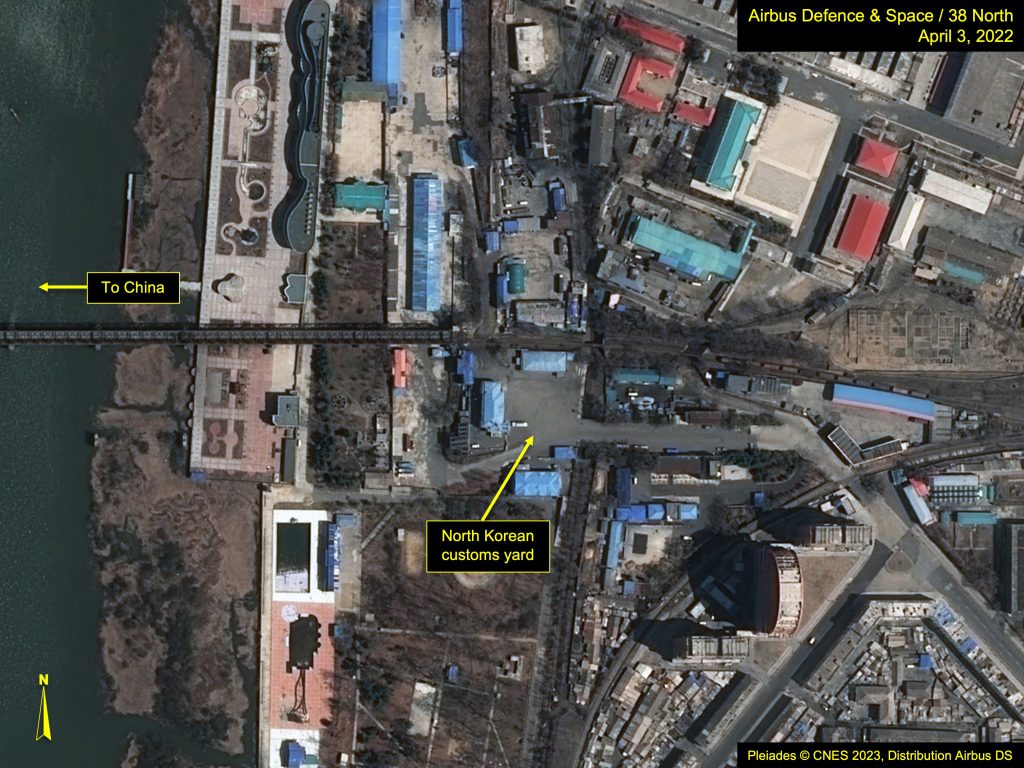
Train traffic also used to cross from the Dandong railway station directly into Sinuiju Station before the pandemic. Since rail freight has resumed, trains now travel straight to a quarantine facility built at the former Uiju Airfield just outside of Sinuiju. It is unclear if or when this will change for freight traffic or when passenger rail traffic will resume.
